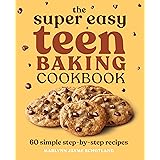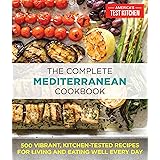Imagine the delightful aroma of freshly baked bread wafting through your home, filling every corner with its inviting warmth. For many aspiring bakers, this dream often feels out of reach, shadowed by intimidating recipes and complex techniques that seem to demand years of experience. Perhaps you have tried making homemade bread before, only to be met with dense, uninspired loaves that left you feeling discouraged. These baking frustrations are common, yet the desire for that perfect, crusty, and tender loaf remains.
Fortunately, the pursuit of exceptional homemade bread does not require a culinary degree or hours of arduous labor. The video above beautifully demonstrates a truly foolproof method for creating delicious artisan bread, even if you are a complete novice in the kitchen. This technique simplifies the traditional bread-making process, ensuring a rewarding experience and a truly delectable result. The ease with which a magnificent loaf can be achieved using minimal effort is truly revolutionary for the home baker.
Unlocking the Secret to Effortless Artisan Bread
The concept of “artisan bread” often conjures images of rustic, hand-shaped loaves with beautiful, crackled crusts and airy interiors. While these characteristics are typically associated with professional bakeries, they are surprisingly attainable in your own kitchen with the right approach. The key lies in understanding a few fundamental principles and employing a method that works with the dough’s natural properties, rather than against them. This method prioritizes simplicity, allowing even beginners to achieve stunning results consistently.
Furthermore, the term “foolproof” is not used lightly here; it truly reflects a baking strategy designed to minimize error and maximize success. This particular recipe focuses on minimal intervention, letting time and temperature do most of the heavy lifting. Consequently, the intimidation factor often associated with baking bread is significantly reduced, making this an ideal starting point for anyone yearning to bake their own wholesome, easy artisan bread.
The Simple Science Behind Your Perfect Loaf
At its heart, bread making is a beautiful chemical and biological process. Understanding these basic elements can demystify the steps and help you appreciate why each one is important, even in a simplified recipe. This foundation enables a deeper connection with the craft, transforming simple ingredients into something extraordinary.
Minimal Ingredients, Maximum Flavor
A remarkable aspect of this easy artisan bread recipe is its reliance on just four core ingredients: flour, water, yeast, and salt. Each component plays a crucial role in developing the bread’s structure, flavor, and texture. Flour provides the gluten that gives bread its chewiness, while water activates the yeast and helps hydrate the flour. Yeast is the living organism responsible for fermentation and the rise of the dough, converting sugars into carbon dioxide and alcohol. Finally, salt is essential for flavor enhancement, controlling yeast activity, and strengthening the gluten network. Imagine combining these basic pantry staples and witnessing them transform into something so incredibly delicious and satisfying.
The Magic of Autolyse and Bulk Fermentation
The initial mixing of ingredients is more than just combining; it’s the start of gluten development. After mixing, the dough is allowed to rest, a process known as autolyse, which permits the flour to fully hydrate and gluten to begin forming naturally without extensive kneading. Subsequently, the bulk fermentation, or the first rise, allows the yeast to work its magic, creating air pockets and developing complex flavors within the dough. This stage is relatively hands-off; the dough simply needs a warm, undisturbed place to expand, often for several hours, until it has significantly increased in volume. Observing this transformation is part of the joy of baking.
Mastering the Art of Gentle Kneading
One of the most daunting aspects of traditional bread making for beginners is often the kneading process. Many recipes call for long, vigorous kneading sessions, which can be physically demanding and confusing to master. However, with this specific easy artisan bread method, the kneading requirement is dramatically reduced, often to just two to three minutes. This minimal kneading is sufficient because the prolonged bulk fermentation period allows gluten to develop naturally over time, reducing the need for intensive mechanical work.
During these brief minutes, the dough is gently worked to bring it together, create a smoother surface, and evenly distribute the gases produced by fermentation. It is a light touch, focusing on shaping rather than rigorous gluten development. Imagine if all you needed to do was briefly connect with your dough, offering it a gentle massage before its final rest. This approach ensures that the bread remains tender and airy, avoiding the denseness that can sometimes result from overworking the dough, particularly for a beginner.
The Dutch Oven Advantage for Crispy Crusts
A truly distinguishing characteristic of artisan bread is its wonderfully crispy, often blistered crust. Achieving this at home without a professional steam oven can be challenging, but a preheated Dutch oven provides an ingenious solution. The heavy cast iron pot, when heated to a high temperature, creates a perfectly enclosed environment that traps the moisture released from the dough during the initial baking phase. This trapped steam prevents the crust from forming too quickly, allowing the dough to fully expand and achieve a beautiful rise, also known as ‘oven spring.’
Furthermore, the high heat retained by the Dutch oven ensures an incredibly even bake and contributes to the beautiful browning and crackling of the crust. The process involves preheating the Dutch oven in the oven before adding the dough, then baking the dough covered for a period to generate steam, followed by an uncovered bake to crisp up the crust. Consequently, you are rewarded with a loaf that rivals those from your favorite artisan bakery, complete with a dark, crunchy exterior and a soft, chewy interior. This simple piece of equipment truly elevates home bread baking.
Common Pitfalls and How to Avoid Them
Even with a foolproof recipe, minor challenges can arise, particularly for new bakers. One common issue is the dough not rising sufficiently; this can often be attributed to inactive yeast, expired yeast, or a room that is too cold for fermentation. Ensuring your yeast is fresh and your rising environment is moderately warm (around 70-75°F or 21-24°C) can mitigate this. Another concern might be a dense loaf; this could result from too much flour, insufficient hydration, or under-proofing. Carefully measuring ingredients and allowing adequate rise time are crucial steps.
Moreover, a pale crust can be disappointing. This usually means the oven temperature was too low or the baking time was too short. A properly preheated Dutch oven and allowing the bread to bake until deeply golden brown will typically solve this. Conversely, a burnt bottom crust can occur if the Dutch oven is too close to the heating element or if it’s left uncovered for too long. Placing a baking sheet on a lower rack can provide insulation. By being aware of these potential issues and their simple remedies, your journey to perfect easy artisan bread will be smooth and enjoyable.
Beyond the Basic Loaf: Embracing Your Inner Baker
Once you have mastered the fundamental easy artisan bread recipe, a world of culinary experimentation opens up. This foundational method serves as an excellent springboard for incorporating various additions and customizations. Imagine enriching your next loaf with fresh rosemary and sea salt, or perhaps sun-dried tomatoes and Kalamata olives for a Mediterranean twist. Seeds like sesame, poppy, or flax can be added to the dough for extra texture and nutritional value. You might also explore different types of flour, such as whole wheat or spelt, to alter the flavor profile and density of your bread, though beginners are advised to stick to white bread flour initially for consistency.
The beauty of this foolproof technique is its adaptability, empowering you to become more confident and creative in your baking endeavors. Each successful loaf builds your expertise, encouraging further exploration and personalization. Ultimately, the satisfaction of slicing into your homemade easy artisan bread, knowing you created such a magnificent food with your own hands, is an incredibly rewarding experience. It is a testament to the power of simple ingredients and a clever method, promising many more delicious loaves to come.











